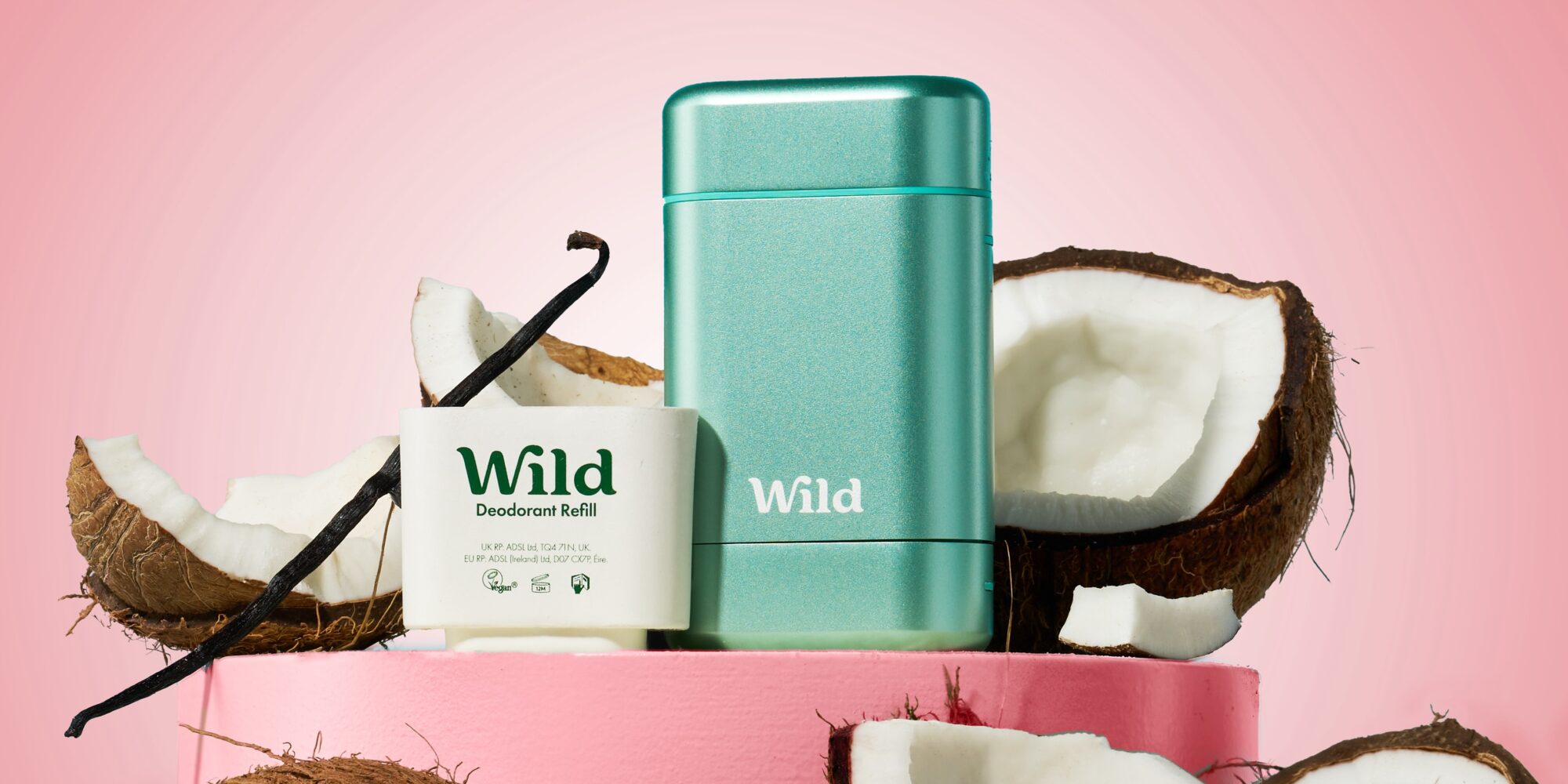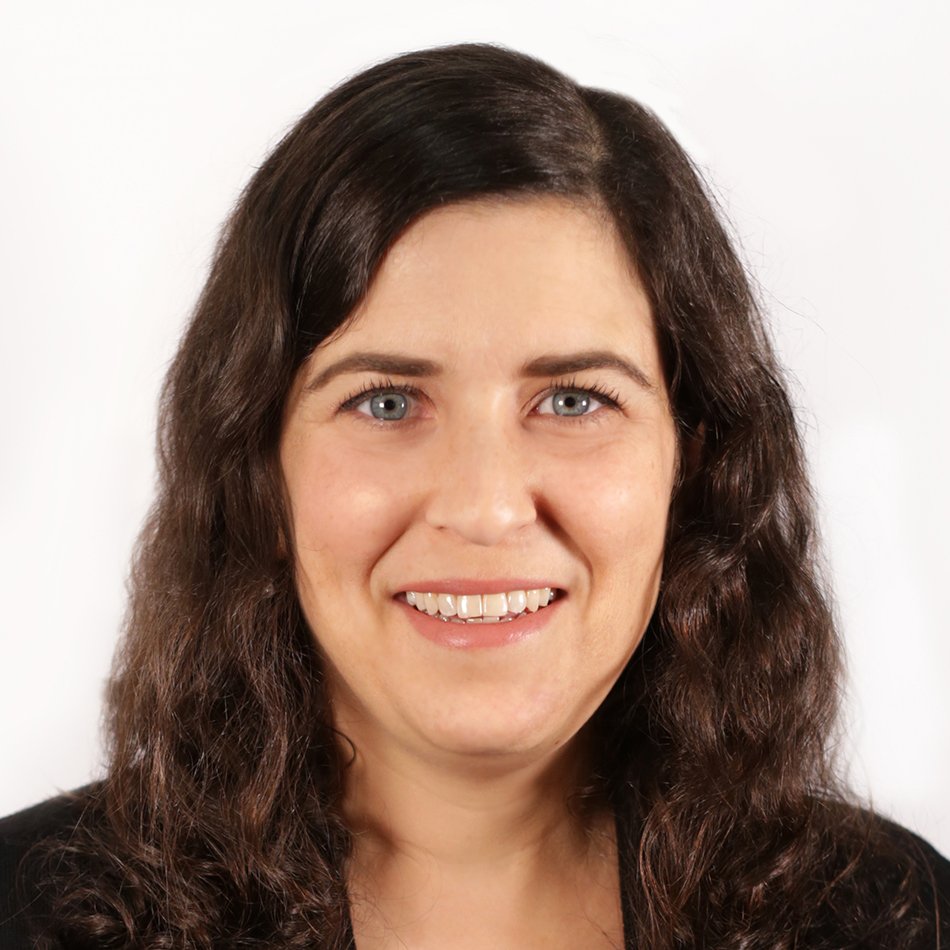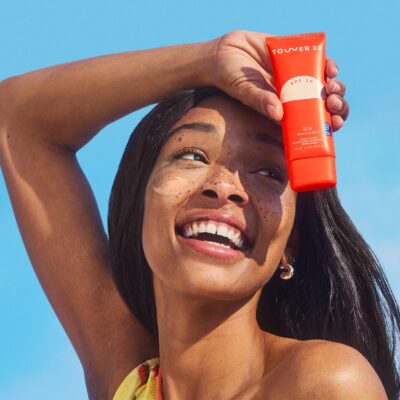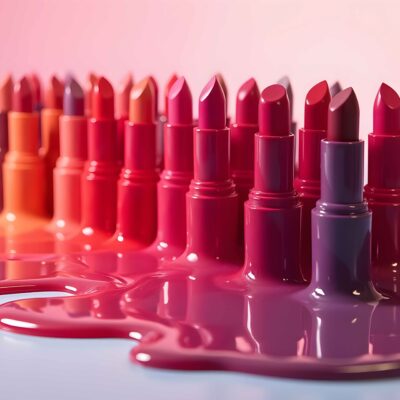
The Bullish Outlook For Beauty M&A And Bearish Prospects For Early-Stage Funding This Year
Although the number of beauty deals didn’t tank in 2024—through October last year compared to 2023, investment bank Capstone Partners estimates there were 57 versus 43 transactions—a significant portion of the volume was from struggling assets and several prominent possible deals never materialized. Glossier, Rare Beauty, Makeup by Mario, Kosas, Merit and Jane Iredale were among the brands reportedly on the market that didn’t trade.
This year, most beauty industry observers are bullish on mergers and acquisitions as M&A activity heats up across sectors. To gain insight on where they think the market is heading, for the latest edition of our ongoing series posing questions relevant to indie beauty, we asked 15 beauty investors the following: What are three predictions for beauty M&A this year? How would you characterize the funding environment for emerging beauty brands, and what ways should they approach it?
- Christine Conway VP, Cult Capital
Based on the financial health of key players, the urgent need for innovation and recent acquisition trends, here are three predictions for beauty M&A in 2025:
1. Financially Strong Beauty Conglomerates Will Lead M&A Activity
M&A in 2025 will be driven by conglomerates with strong balance sheets, while financially weaker companies like Estée Lauder will likely scale back acquisitions and focus on restructuring
- L'Oréal (€29.08B in equity) and E.l.f. Beauty ($800M in equity) have the financial flexibility to actively acquire high-growth brands.
- Estée Lauder’s $580M Q4 loss and workforce cuts indicate it may pause M&A or even sell off struggling brands to regain profitability.
- Interest rates will play a role, with companies like E.l.f., which has low debt, at an advantage, while debt-heavy firms may hesitate to make large purchases.
Implication: Expect cash-rich conglomerates to be the most active buyers, while financially weaker players may focus on survival rather than expansion.
2. Strategic Acquisitions Will Focus On Filling The Innovation Gap
With beauty innovation at a 10-year low (Mintel reports only 35% of new products are truly new), conglomerates will buy innovation rather than develop it in-house.
- Unilever’s K18 acquisition (biotech haircare) highlights how conglomerates value science-driven, patented technology in beauty.
- Puig’s acquisition of Dr. Barbara Sturm (science-backed skincare) and E.l.f. Beauty acquiring Naturium (clinical skincare) underscore the need for brands with scientific efficacy and performance-driven ingredients.
- L'Oréal’s Aesop acquisition ($2.5B) highlights the continued demand for premium, sustainability-driven brands.
Implication: Expect more acquisitions of biotech-driven, clinical and highly differentiated beauty brands as conglomerates seek to modernize their portfolios.
3. Private Equity Will Continue To Compete With Strategic Buyers
While beauty conglomerates are actively acquiring, private equity (PE) firms will remain aggressive competitors for high-growth brands.
- Supergoop! (Cult Capital Investment) was acquired by Blackstone Growth, highlighting PE’s appetite for beauty brands with strong category leadership and replenishable revenue models.
- Advent International’s past acquisition of Olaplex shows how PE firms scale brands quickly, preparing them for IPOs or secondary sales.
- PE firms have significant dry powder, allowing them to bid against strategics for premium beauty brands, which could drive up valuations in competitive deal processes.
Implication: Founders looking to sell will have more options than ever, with both strategics and PE firms aggressively seeking high-growth beauty brands
Final M&A Thoughts For 2025
L'Oréal, E.l.f. Beauty, Unilever and Puig will be the most active strategic acquirers. Estée Lauder and other struggling conglomerates may pause acquisitions or consider divestitures
Private equity firms will compete with strategics for the most valuable brands, creating a dynamic deal environment. Biotech, clinical skincare and high-performance haircare brands will be the most sought-after acquisition targets.
M&A in 2025 won’t be about volume. It will be about smart, strategic deals that fill gaps in innovation and strengthen portfolios.
- Ashleigh Barker Director and Head of Beauty and Personal Care, Lincoln International
Beauty M&A will bounce back in 2025, particularly in the second half of this year. I am cautiously optimistic about market activity, driven by the number of unclosed deals in late 2024 (previously thought to be strong benchmarks for the year ahead) offset by a deep pipeline of deals preparing to launch later this year in addition to investors strong appetite to see increased deal flow.
My predictions for 2025 include:
- Targets in the skin, hair and body care categories will remain top of mind for investors. These categories sit at the center of several megatrends in beauty, including science-backed formulas, ingredient innovation and extending the results-driven benefits of facial skincare to the scalp and below. The “skinification of…” catchphrase has entered every trend-driven conversation and remains a compelling point of positioning when backed by efficacy and real results.
- Valuation conversations will have a greater emphasis on operational excellence and a balanced approach to scalability, requiring brands to have solid profit margin profiles and strong unit economics that won’t be burdened by expansion into new channels or product categories.
- As strategic buyers become increasingly focused, we’ll see moretailored processes rather than broad auctions, concentrated on those that bring a clear value-driven approach to partnership or have spent time pre-emptively forming their thesis around the opportunity and meeting with management.
Emerging brands that seek funding should consider their specific needs and sources of capital. Many fledgling founders assume they need an equity investor which dilutes their ownership, but several other financing options can support growth with additional input and capabilities, from term loans and lines of credit to AR and inventory financing.
As always, a clear storytelling narrative and deep knowledge of one’s business are required when meeting with investors, underlying the rationale for why your brand deserves to have a place on store shelves and how you connect with consumers (and their wallets) to support their needs.
- Anna Whiteman Partner, Coefficient Capital
There will be renewed strategic interest, if not deals transacted through to completion, in the back half of 2025 as dominant players, many with new leadership at the helm, begin to divest low growth assets to make room for higher growth entrants. As strategics wade back into a mindset of growth through acquisition, they’ll likely move cautiously in looking for assets in the mid ($50 million to $150 million) revenue range with healthy profitability margins rather than swinging for the fences.
Optimistically for brands looking to break into that revenue bracket, according to the Coefficient Capital and New Consumer trend report surveying over 3,000 consumers, a significant portion of consumers, especially young consumers, plan to spend more money on beauty and personal care products over the coming year. Among gen Z consumers, 41% plan to spend at least a little more over the next year and only 13% plan to spend less, so strengthening consumer appetite for beauty remains a tailwind to the growing brands in the category.
- Elizabeth Lim Strategic Advisor, Joyance Partners
3 Predictions For Beauty M&A In 2025
Rise In Deal Activity:
M&A activity in the beauty sector is set to grow as strong consumer demand and diverse product categories present exciting opportunities for companies to expand their reach, enhance portfolios and stay competitive. High-growth niche brands, especially those offering a unique selling proposition will drive acquisitions, with a focus on innovation and alignment with evolving consumer values.
Demand For Distinctive And Targeted Brands:
The rapid growth of new beauty brands has increased demand for acquisitions of specialized, innovative brands with strong appeal. Companies are targeting brands addressing specific skin concerns, unique hair challenges or offering tech-forward solutions. These acquisitions enable larger players to connect with focused yet growing audiences while fostering strong brand loyalty.
Strategic Growth In Emerging Markets:
Emerging markets, particularly in Asia and Latin America, will be key M&A hotspots. Companies acquiring brands with strong local roots can tap into high-growth opportunities and culturally relevant innovations that can expand into other regions, solidifying their global market leadership.
While the funding environment remains competitive, it offers exciting opportunities for brands that stand out with clear and compelling differentiation. To thrive, emerging brands should focus on the following strategies:
- Profitability first: Build a sustainable and profitable business model with strong financial discipline, even if it means slower initial growth. A solid foundation ensures long-term success. Slow and steady truly wins the race!
- Smart scalability: Develop a clear, efficient growth strategy that combines increasing market penetration with new customer acquisition. Optimize operations, manufacturing and supply chain logistics to support scalable and sustainable expansion.
- Partner with aligned investors: Look for investors and advisors who offer more than capital. Seek partners with deep industry knowledge and the ability to provide operational and growth support tailored to the beauty sector.
- Explore alternative funding: Consider creative funding options such as crowdfunding, strategic brand partnerships, or small business loans. These avenues can help drive growth without requiring significant equity sacrifices early on.
By focusing on these areas, emerging brands can position themselves for success and navigate the funding landscape with confidence. The opportunities are there for those who innovate, adapt and stay true to their unique vision!
- Rich Gersten Co-Founder and Managing Partner, True Beauty Ventures
Beauty M&A is poised for a rebound in 2025 as strategic acquirers, who have been relatively quiet in recent years, face mounting pressure to drive growth. The organic revenue growth of many large beauty companies is no longer sufficient to justify the high multiples at which they trade, making acquisitions a critical tool for entering new categories, markets and distribution channels as well as uncovering innovative technologies.
Recent leadership changes at Estée Lauder and Unilever (prestige beauty) may also signal renewed focus on these priorities. Higher-growth categories like fragrance and haircare, historically less active in M&A, are now outperforming and could attract increased interest. Yet, the challenge lies in the sheer number of brands seeking exits relative to the pool of strategic buyers.
For M&A activity to accelerate, private equity must play a pivotal role in addressing this supply-demand imbalance, while the industry could benefit from the emergence of new strategic acquirers to reshape the competitive landscape.
The funding environment for emerging beauty brands will remain disciplined in 2025, with investors raising the bar on what qualifies for investment as the path to exit becomes increasingly complex due to stalled M&A processes. At True Beauty Ventures, we continue to take a highly selective approach, prioritizing authentic and credible founders, uniquely positioned and differentiated brands, and exceptional products.
We anticipate valuations will further adjust downward until the M&A market regains momentum. For brands seeking to stand out, the focus should remain on delivering strong revenue growth with a clear and reasonable path to profitability. Additionally, fostering a loyal community and building an engaged social following will be key drivers of long-term success in a competitive market.
- Susan Lin Partner, Felix Capital
A few predictions:
1. More premium and clinical skincare and haircare will likely still be the focus for M&A. We think potential acquirerswill likely continue to prioritize acquisitions in premium skincare (and haircare), especially brands with strong clinical positioning and science-backed formulations.
2. I think we'll continue to see more selective M&A, with acquirers focusing on very high-quality brands/assets that have genuine customer love, differentiated brand and product, sustainable margins and unit economics and omnichannel success. While some brands have scaled quickly through TikTok and other social channels, we still think acquirers are very selective in looking for brands with enduring appeal and more hesitant to back anything too fad/trend driven.
3. In terms of the early-stage funding landscape, we continue to see a lot of activity (and investors) interested in beauty, from skincare to haircare, fragrance, body care and beauty wellness, which we've seen in our own portfolio as well. This has coincided with an explosion of new brands/startups in the last five-plus years, so investors do still remain selective.
For founders, we'd continue to emphasize the importance of building strong foundations including delivering genuinely great products, building an authentic community and brand, fostering customer love and focusing on scaling capital efficiently.
- Manica Blain Founder, Top Knot Ventures
On M&A predictions:
I think there is a very strong aversion to overpaying for an asset that may have quickly scaled, and as a result, there are question marks around overall longevity and permanence. I think many acquirors find themselves asking the question, “Is this a trend, is this a moment or is this really a brand that will last the test of time?”
So, my first prediction is that I suspect strategic acquirors may start paying closer attention to smaller brands (and smaller deals). I think they will hunt for brands that have already demonstrated the test of time, that have amassed highly loyal and sticky customer bases, and have steadily grown, but with limited funding and resources, and, as a result, these brands will be relatively “small.” As a strategic I’d look very closely at some of these smaller brands as I would see opportunity in putting such a brand into my platform and supercharging its growth, realizing and creating the synergy rather than paying for it.
My second prediction is that we might start to see some more activity in a few of the “emerging” categories within beauty. Body and wellness are two subsegments I haven’t yet invested in (and mostly driven by lack of M&A activity), but I have been paying more and more attention to brands in these emerging categories.
Finally, my last prediction is more appetite for brands with very authentic stories—stories around specific ingredients and rituals from beyond our borders, more founder-led innovation and storytelling. I expect to see continued reticence towards celebrity-backed brands, and I wonder if influencer-backed brands are starting to become an obvious no-fly zone.
On fundraising:
One trend I’ve observed a lot over the last two years, and I expect will continue into 2025 is increased caution in pre-revenue, pre-launch beauty brands. Even with a superstar second-time founder at the helm with all the right networks and relationships, it is still so incredibly challenging to build a brand. As a result, raising money at that very early juncture (i.e. pre-launch) will reflect very low valuations, and so I think very little capital will be raised at that stage.
- Andrew Ross Senior Advisor and Venture Partner, XRC Ventures
Three predictions for M&A:
1. M&A activity will increase versus 2024. There are more assets in the pipeline ready for acquisition, and there should also be more buyers across strategics, new platform acquirers and renewed interest from larger private equity players. 2024 was painful for many, but it forced market alignment on what buyers are looking for and on value expectations.
2. We also think that the “volatility” of match between acquirer and acquired will continue to increase. Transactions will get done, but it will be much harder to predict both who will buy an asset and the structure of the deal. Advisors and banks will have to work harder and be more creative working across a broader range of potential acquirers to find the right match, e.g., Korean and even Chinese buyers looking to diversify into the North American market.
3. As a result, there will be a huge push for more confidentiality. Several brands were burned last year announcing or even talking publicly about processes that then failed to consummate in a transaction. This left them looking tarnished in the market (sometimes justified, but many times not). Look for brands and banks to try to avoid the limelight for as long as possible as they consider or pursue transactions in 2025, and for brand PR to adjust to focus on business metrics versus M&A speculation.
Unlike with M&A, the funding environment for emerging brands will remain tough and in particular for pre-seed. Capital is either backlogged in the system or being distracted by the AI bubble, and there will have to be some exits to regain early investors’ confidence.
We remain committed to this space at XRC Ventures and see this as a huge opportunity to continue to fund great early-stage brands like Naked Sundays, Solawave, Barb, Minu and others. However, brand founders should engineer their business, unit economics and marketing plans accordingly. Sustainable growth and early profitability remain key both to fundraising and maximizing every dollar raised.
- TINA BOU-SABA Investor
While there is quite a bit of uncertainty regarding the macro outlook, I feel fairly optimistic about the U.S. business environment this year. As a result, my first prediction is that we will see a meaningful increase in beauty M&A compared to last year. In my recent conversations with bankers, they have noted a strong pipeline and positive momentum during the first few weeks of the year. They are busy!
My second prediction is that we will see at least one blockbuster (let’s define that as $500 million-plus) beauty deal this year. There are a number of outstanding brands that did not transact last year for various reasons, and I think that one or more will get across the finish line soon.
Lastly, I expect that we will see PE-backed aggregation of mid-sized brands that don’t quite meet the expectations of the traditional strategic acquirers, but are nonetheless healthy businesses with attractive growth prospects.
It is important to note that we are now roughly seven to10 years past the peak of the DTC brand funding bubble. As a general matter (not specific to beauty), there are many independent brands out there that are likely feeling pressure from investors to get an exit, which may create compelling opportunities for PE buyers.
I am less optimistic about the funding environment for emerging beauty brands. It continues to be difficult to raise capital for brands with less than $5 million to $10 million of sales, unless the brand is led by a successful repeat founder or influencer/creator or builds on an existing community with high conversion potential. And it is almost impossible to raise capital without a significant retail deal.
However, if a brand can get to that $5 million to $10 million annual sales level, the pool of potential investors increases meaningfully. To the extent that an early-stage brand seeks to raise $2 million to $3 million of seed capital, founders should be prepared for valuations that will reflect the high risk associated with such an investment.
In other words, most early-stage companies are not successful (as a general matter), and even among brands that gain real traction, very few achieve a meaningful exit, and even fewer a “blockbuster” exit. This has become extremely clear over the past 10-plus years. Hope springs eternal, and entrepreneurs and growth investors like myself are fundamentally optimistic. We focus more on what is possible than what could go wrong, but we are also realistic, and this is reflected in how we price capital at the early stage.
- JAMIE WOODARD Partner, Conteur Capital Partners
2024 was a conservative year for beauty M&A. We’re all hoping for a more active 2025, though I think the first half of 2025 will still be slower as investors learn more about potential changes in economic and trade policies under the new administration. The tariffs with Canada and Mexico will be something to monitor, and we’ve already seen the 10% tariffs against China put in place
Brands need to be proactive around their supply chain. If you could be impacted by these tariffs, explore if you can source your materials from countries without tariff risk, including within the U.S.
Despite the broader decline, we’re seeing in spending across discretionary categories, beauty has shown consistent growth. This will make beauty an attractive category for potential buyers. Retailers like Target are expanding their wellness/beauty offerings due to ongoing growth.
- MEGHAN MCLAUGHLIN Executive Director, Moelis
1. With record stock performance, tight credit spreads, looser regulation and the continued growth in consumer spending, I believe there will be increased M&A activity in 2025. While this creates an ideal macro background, the biggest difference between last year is growing animal spirits and conviction around doing deals.
2. We expect that deals that went to market in 2024 that didn’t trade well will clear in 2025. Once the dam breaks with one marquee deal, this will be the green light for other assets that have been on the sidelines to come to market.
3. Strategics continue to be on the hunt, but given their legacy brands are holding share much better now than in the past three years, coupled with a higher cost of capital environment, we believe some strategics will continue to rationalize their portfolios by divesting non-core assets and doubling down on core brands.
4. For emerging brands, there is still a significant amount of dry powder amongst sponsors and growth investors. They are looking for differentiated brands addressing a real consumer need with consistent, profitable topline growth.
- Claire Chang Founding Partner, IgniteXL Ventures
My prediction is that skincare brands will continue to be attractive targets, especially those with unique IP, scientific backing and strong brand equity.
The same is true for emerging brands and the funding landscape. This is a time when more than ever before the brands need to demonstrate their unique innovation whatever that may be to stand out from the “me-too” products.
They must demonstrate traction beyond brand potential by showing real growth, strong pricing power and customer loyalty. Channels no longer just mean Sephora or Ulta, but now Amazon matters, international markets and DTC matter.
- Kelly BottenfieldCEO, K & C Ventures
The beauty industry will remain a hotbed for M&A activity, with strategic acquirers and PEs focusing on innovation, technology integration and market expansion. Brands that differentiate through personalization, clinical-backed formulations and sustainability initiatives will continue to see growth.
Beauty brands with a strong consumer connection, clear differentiation and data-backed strategies will be best positioned for funding success. Investors are looking for brands that balance innovation with operational discipline, ensuring long-term sustainability in this ever-changing marketplace.
- Ronald Mackey Managing Partner, Clinton View Capital
2025 Beauty M&A Predictions:
I believe private equity beauty M&A activity will grow modestly in 2025 driven by 1). significant levels of dry powder that remain from depressed acquisition activity in 2023, 2). a convergence of buyer and seller price expectations, and 3). continued mid-single digit growth in the beauty category broadly.
Beauty Industry Outlook:
I expect Amazon to continue gaining market share within the beauty sector, which creates a significant growth opportunity for 1). brands sold on Amazon and 2). marketing and distribution services companies that support these brands.
Macroeconomic indicators show that the U.S. consumer is under pressure. For example, credit card debt is at record levels with delinquency rates rising and cracks in the U.S. job market are emerging.
As a result, I believe beauty shoppers will be more selective on how they spend their discretionary dollars in the intermediate term. Brands that deliver differentiated product efficacy, clean formulations and authenticity in their marketing messaging are poised to gain share.
The U.S.’s tariff policy is evolving and will potentially affect the margin profile and price point of beauty products. Beauty investors and brand executives will be focused on this issue and ways to mitigate the effects of any significant tariff policy changes.
- ODILE ROUJOL Founding Partner, Fab Co-Creation Studio Ventures
Investors acquiring brands and companies will:
1. Favor U.S. brands strong in the U.S. market. It has the strongest tailwinds versus other regions, including Asia.
2. Favor brands with a healthy mix of DTC and strategic retail partners. Being on Amazon can help, and it represents 30% of revenues on average for brands in our portfolio. Capturing data and customer insights has a true value
3. Favor brands with strong economics (repurchase, lifetime value and community engagement matter.)
If you have a question you'd like Beauty Independent to ask investors, please send it to editor@beautyindependent.com.





